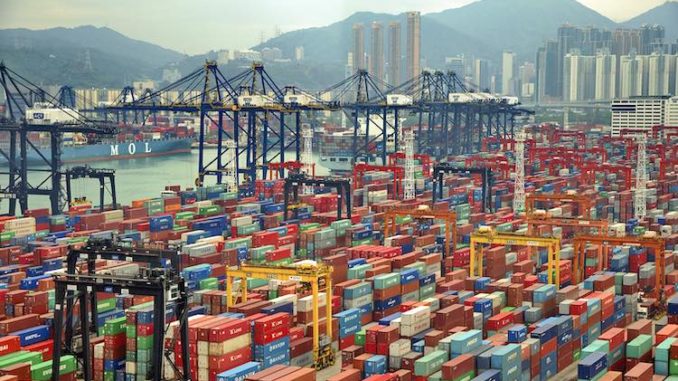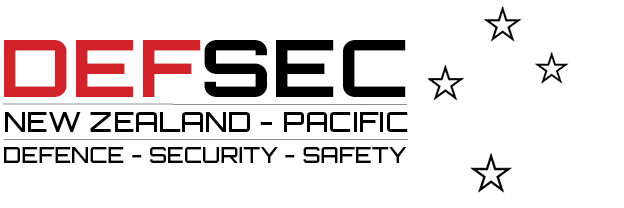
Former Defence Minister Wayne Mapp surveys the state of China-US rivalry in East Asia, suggesting that New Zealand can play an important role in diffusing tension in the region – if Wellington chooses to invest.
The tempo of the war of words between China and the United States keeps building. It is no longer uncommon to see speculation about a future great power military conflict in East Asia. How much attention should we paying to this? To what extent is it a real threat?
I last wrote about the China challenge in the Summer 2019-20 issue of Line of Defence Magazine, nearly two years ago. The fundamental trajectory of China has not changed since then.
China remains on track to reaching economic parity with the United States within a few years, though per capita GDP will only be a quarter of that of the US. However, it is worth recollecting that when the US had similar real GDP per capita, it was building its first nuclear aircraft carrier and was about to embark on the Apollo programme.
China has the potential to hugely increase its military capability. Most informed estimates have China’s defence spending at about 2 percent of GDP, about double the official figure.
Taken as a percentage of population, the People’s Liberation Army (PLA) is about a quarter the size of that of the US defence force, though in absolute terms, the PLA has about the same number of people. The percentage of people in uniform is actually similar to that of New Zealand but given the high level of investment in high end technology, China will be spending substantially more than New Zealand as a percentage of GDP.
During my time at the Centre for Strategic & International Studies (CSIS) in Washington DC in the summer of 2012, one of the researchers there argued that a combat aircraft would cost China the same in nominal terms as it would in the United States. I said that took no account of the significantly lower costs in China. At that time China was building as many Su 27 aircraft per year as the US was building F15E, F16 and F18E/F aircraft.
However, the cost per aircraft was clearly much less than in the United States, particularly given that in 2012 China was spending only 2 percent of GDP on defence and that China’s economy was only half the size of the United States’. The labour cost per aircraft was clearly much less in China than in the US.
China’s defence force is still substantially less powerful than that of the United States, both in qualitative and quantitative terms. However, China has focused its investment on naval and air capabilities that will have greatest effect within China’s continental margin, specifically within 1,000 miles of the China’s coast. This includes both the East China Sea and the South China Sea.
It is clear that China intends to be the dominant power within this area. China’s reach within this area clearly will not go uncontested. The US has sovereign territory close to China’s continental margin, in Guam and the Northern Marianas. Japan, in particular, will contest China’s influence in the East China Sea, and Taiwan is building up its military capability to resist the threat of invasion.
China could clearly increase its defence expenditure and build its naval and air capability at a faster rate than is already occurring. But whether that would actually increase China’s dominance within the region is questionable. It might simply spur an arms race both within the region, and with the US.
The trajectory of great power competition within East Asia has been evident for a decade, particularly with the establishment of Chinese bases in the South China Sea. The establishment of these bases was the first real indication that China would no longer be hiding its ambitions behind a veil.
Although he may use more direct language than his predecessors, the fact that the construction of these bases occurred before Xi Jinping became President shows that China has spent many decades working toward its long-held ambition to be the dominant power in East Asia, including within its littoral margins.
What do China’s power ambitions mean for the next decade or so?
It seems hard to imagine that China will forgo its ambitions, and it is much more likely they could intensify. Similarly, it is unlikely that the US will simply accept this. Washington, along with its core allies, will seek to match or, more likely, overmatch Chinese capability.
We can expect, no matter the nature of the US administration, that there will be increased defence spending, particularly on naval and air capability. The new long-range bombers will be entering service in the late 2020s. The new frigates will also be coming into service. The United States Navy could easily get 100 such ships over the next decade.
If this is the outcome, tensions in East Asia will sharpen, rather than reduce. They will spill over to the broader China-US bilateral relationship. Inevitably, the close allies of the United States will also be drawn into the conflict.
In practice, that means the likelihood of military confrontation will increase. This does not mean out right war. Instead, it is likely there will be military incidents, which could be as serious as the sinking of ships and the shooting down of aircraft. The situation would be similar to the most intense phase of the Cold War from 1950 to 1980.
It is worth recollecting that even during this period, and especially in the 1970s, the economic relationship between the West and the Soviet Bloc steadily increased, though of course there never was the level of economic integration as now exists between China and the US, and with the West generally.
It is this latter point that might be seen as providing the best hope to avoid a repeat of the Cold War. However, history is not a comforting guide in this respect. Prior to World War One, the countries of Western Europe had complex and comprehensive economic ties. These were not enough to thwart the slide into war.
Of course, the contemporary situation is different. Both China and the US are nuclear powers. Nations still recall the disastrous miscalculations that led to war in the early twentieth century, not just once, but twice.
Nevertheless, there are powerful forces and voices on both sides that are likely to impel a more competitive, even confrontational, relationship between China and the US. It seems unlikely that the Washington will stand by as China increases its military power and dominance within the littoral margins of East Asia. The US will be more proactive, and it is probable that this will be welcomed by its allies within the region, particularly Japan and Taiwan.
It seems that a new version of the Cold War is more likely than not. There are too many fundamental factors that are driving toward this outcome.
It will take exceptional statecraft to avoid this prospect. This will require more from Washington than it will from Beijing, since it is US primacy that is being challenged. The US will have to cede some level of power to China, something that will be very difficult for the US to do. It may require a new way of thinking about security within the East and South China Seas, with something akin to both nations acting as co-guarantors of security within these waters.
Can New Zealand play a role in defusing potential tension?
It won’t be easy. As a member of Five Eyes and part of the broader Western grouping of nations, there will be an expectation that New Zealand will simply stand alongside its traditional partners. However, we add relatively little by being simply part of the chorus.
It would be better for New Zealand to find a way to act more creatively to suggest alternative ways to reduce the tension. One of my roles is the Deputy Chair of the Public Advisory Committee on Disarmament and Arms Control (PACDAC), established under the Nuclear Free legislation. PACDAC has proposed to the Minister of Foreign Affairs that New Zealand should fund an Aotearoa Peace Research Institute modelled on the Norwegian Peace Research Institute in Oslo (PRIO).
Norway has been able to manage the art of being a leading member of NATO while devoting significant public money to peacebuilding, both through peacekeeping missions with the UN and with building intellectual capacity to deal with the difficult art of resolving military conflict through negotiation and mediation. Norway has been prominent in many international peacebuilding initiatives, particularly in assisting parties to defuse regional conflicts.
PRIO is the principal reason why Norway is able to fulfil this role. PRIO provides the intellectual capital and skills to build a body of serious work to make a measurable difference in ameliorating and reducing conflict.
Smaller nations, even when they are part of security alliances, are able to act more flexibly than the larger, more central nations. New Zealand needs to make more of this advantage than we currently do. The increased tension in East Asia, particularly among the great powers, means the imperative for New Zealand is to be more active than we currently are.
A small proportion of the investment in the Ministry of Foreign Affairs and Trade and the Ministry of Defence could be directed to establishing an Aotearoa Peace Research Institute. We currently send nearly $4 billion on defence and foreign affairs. An institute could be started for less than $1 million.
Such an institute would bring together scholars, diplomats and those with experience in international relations to work on initiatives that could lead to resolving regional competition other than by a show of arms. The work of the Institute would include symposia, dialogue and developing the architecture for a more co-operative Asia Pacific.
The Institute would have to show a realistic understanding of the forces that drive the current levels of tension if it is to make a meaningful contribution to regional dialogue. The objective would be for the Institute to build a body of work that is respected by the political, foreign affairs and defence establishments within the region. If this is achieved, then New Zealand will be able to offer more than it is currently able to do.
Without alternative approaches, the risk that the Asia Pacific region will slide into a new cold war is all too likely. The proposed institute, costing less than 0.1 percent of the combined defence and foreign affairs budgets, would seem to be an appropriate step for New Zealand to take. The cost would be modest, but the gain could be very significant.
Comment below to have your say on this article.
If you have a news story or would like to pitch an article, get in touch at editor@defsec.net.nz.
Sign up to DEFSEC e-Newsletters.









